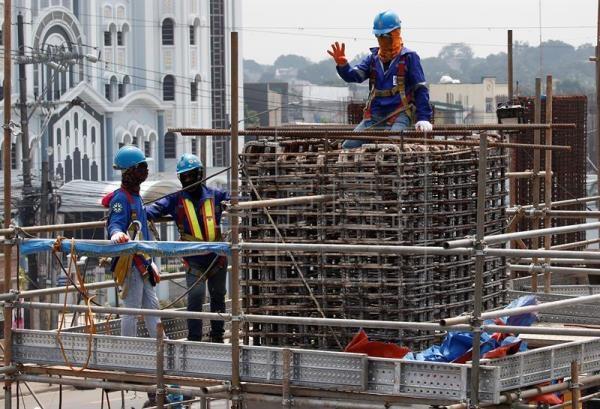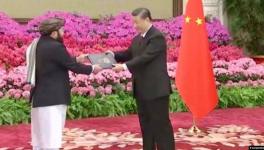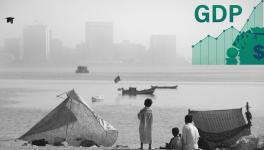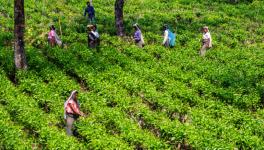Half of All Workers in Asia-Pacific Will be Engaged in ‘Vulnerable’ Jobs by 2020: ILO Report

Nearly half of all workers — 49% — in the Asia-Pacific region will be engaged in ‘vulnerable employment’ by 2020, says a new report by the International Labour Organisation (ILO).
Released on November 16, 2018, the report titled ‘Asia-Pacific Employment and Social Outlook 2018’, says there are 1.9 billion workers — 1.2 billion men and 700 million women — in the Asia-Pacific region, representing 60 % of the global workforce in 2017.
About one-fourth of all workers in the region — 446 million workers — were living in ‘moderate or extreme poverty’ in 2017. An ILO report earlier this year had estimated that Southern Asia — where more than 41% of workers were living in extreme or moderate poverty in 2017 — accounted for “more than two-thirds of all working poor in Asia-Pacific.”
More than two in three workers — 68.2% — in the Asia-Pacific region were informally employed in 2016, says this new report.
Also Read: Indian Workers on Starvation Wage
Not surprisingly, the rate of informal employment rate was the highest in South Asia, where nearly 88% — or 87.8%, to be precise — of workers were informally employed.
Almost one in two workers, or 48.6% — 930 million workers — remained in a ‘vulnerable’ status of employment in 2017, the report says.
The share of persons in vulnerable employment in low-income Asian-Pacific countries was a whopping 71.1% while that in high-income Asia-Pacific countries was just 12.9%.
In middle-income (emerging) economies of the region, share of vulnerable employment was 50.6%.
However, the ILO defines ‘vulnerable employment’ rather narrowly — as the sum of workers in own-account work (self-employed without employees) and contributing family workers (helping out without pay in a family enterprise).
It says, “Own-account workers and contributing family workers are assumed to be less secure in their jobs and more vulnerable to poverty, although it is true that persons in paid employment and even employers (categories of non-vulnerable employment) can also lack economic security...”
But the ILO does not include all forms of informal employment that is highly ‘vulnerable to poverty’ and insecure — in terms of economic security, job security, and even life security — under the category of ‘vulnerable’.
Also Read: Fixed Term Jobs: Modi Govt. Gives “Hire & Fire” Freedom
For example, meagrly paid (below minimum wage) workers employed casually or contractually in illegally running factories in and around Delhi — which regularly see deaths of workers — where no labour laws or safety norms are followed, and who can hired and fired without notice at any point, and often work under inhumane conditions.
These workers are obviously in employment that is extremely vulnerable, but they are not counted under this category by the ILO and the likes.
The ILO report says, “Informal employment is closely linked to vulnerable employment because contributing family workers are by definition informal, and 86.2 per cent of own-account workers were classified as informal workers in 2016.”
The informally employed share of paid employees was 49.8%, it says.
“Workers in agriculture are the most at risk of informality, but in terms of numbers, workers in services represented the majority of workers in informal employment in 2016,” says the report.
But even excluding other forms of informal and insecure employment from the category of ‘vulnerable’, the vulnerable employment rate in India is extremely high — 82.2 per cent in the total employment, as per data of ‘2010 or nearest year’, says the ILO report.
In any case, the vulnerability for India’s workers is only going to get worse as the BJP-led NDA government not only looks to do away with existing labour protection regulations — in the name of ‘ease of doing business’ to attract investment in the country — but also legally fortifies practices that spell doom for workers, such as fixed-term employment. An amendment to the industrial employment rules that was passed in March, fixed-term employment gives all businesses the freedom to “hire and fire”, effectively destroying all protection to labour.
Other findings of this ILO report include the fact that workers in South Asia worked for the highest number of hours per week in the world. In 2017, the average hours of work in South Asia were 46.4 hours per week, followed by East Asia with 46.3 hours per week. The report says workers in low-paid jobs in particular work more than 48 hours per week.
The regional unemployment rate is 4.1% t and is projected to remain so through 2020, which is the lowest in the world and below the global rate of 5.5% in 2017.
However, the report notes that there is a persistent deficit of ‘decent’ work — as evident in the fact that one in two persons is engaged in ‘vulnerable’ (according to ILO) employment and more than two in three workers were in informal employment, as mentioned above).
“High employment ratios and productivity gains in the region mask persistent and worrying decent work deficits,” said Sara Elder, lead author of the report and Head of the ILO Regional Economic and Social Analysis unit, in a press release.
“Many people, in particular in the region’s developing economies, still have no choice but to take jobs with poor working conditions that do not generate stable incomes nor safeguard them and their families against poverty in the longer term.”
The report found that between 1997 and 2007, labour productivity (defined as output per worker) in the Asia-Pacific region increased by 4% annually on average, while the global average was 2.4%.
In the past decade (2007–17), the growth of labour productivity, at 5% per year, was even stronger in the region.
But gender inequality continues to remain a major concern in the labour markets of Asia-Pacific — the male participation rate in the region exceeded the female participation rate by 30 percentage points in 2017, a decline of only 1 percentage point since 2000.
The ILO also found that the unemployment rate in the region is highest among people with secondary education. The report says this trend seems to “confirm an increasing “hollowing out” of middle-skilled jobs in emerging economies, in part due to technological progress, with information and communications technology (ICT) lessening the demand for workers engaged in routine tasks”.
However, in eight countries, the unemployment rate was highest among tertiary graduates — “including in high-growth emerging economies, like India, Thailand and Vietnam, but also in Cambodia and Sri Lanka, where graduate employment is likely constrained by limited industrial diversification”, says the report.
The other countries where the unemployment rate is highest among tertiary graduates are Pakistan with 16.8% as of 2015; Bangladesh with 10.7% as of 2017; and the Republic of Korea.
In India, the ‘latest year’ data being from 2012, the unemployment rate among those who studied till secondary school was 6.3% while the unemployment rate among tertiary graduates was 8.4%.
The report also includes a table on ‘variables of worker satisfaction or dissatisfaction’ from the Gallup World Poll, which found that 40.6% of paid employees in India in 2013 felt they were ‘not paid appropriately’.
Get the latest reports & analysis with people's perspective on Protests, movements & deep analytical videos, discussions of the current affairs in your Telegram app. Subscribe to NewsClick's Telegram channel & get Real-Time updates on stories, as they get published on our website.
























